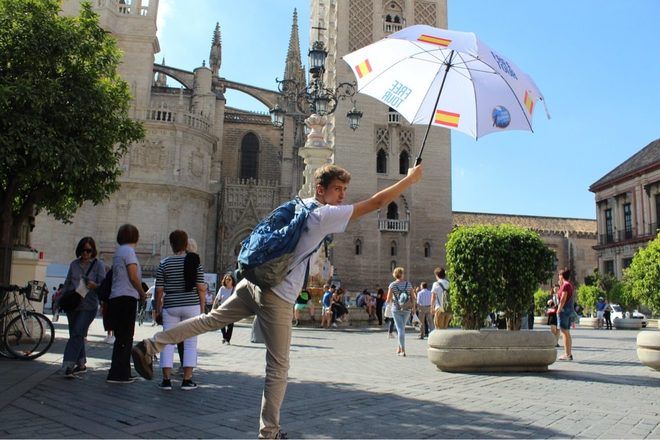
A free walking tour is like a play: each word is of vital importance to transmit your speech in the best way and touch the emotions of your travelers. In this post, we will explain how to create an amazing script, which will be the bible of your journey. It will allow you to choose the best content in order to create an incredible experience and receive lots of money.
Content
Before creating the tour script
Before starting to write the script, you should be aware of at least these 2 elements:
- Make sure to have identified all the places of interest (ex: town hall) and topics (ex: gastronomy) that you want to introduce throughout the tour.
- Make sure to have ordered all the places and topics to create your tour itinerary, taking into account a coherent structure and the shortest distance between each stop (max. 2-3 minutes).
If you have any questions about that, we strongly advise you to read this post first to define the itinerary of your tour.
1. Create a great introduction
Think about it as if it were the first few minutes of a movie or the first pages of a book. You have to create the “WOW” effect.
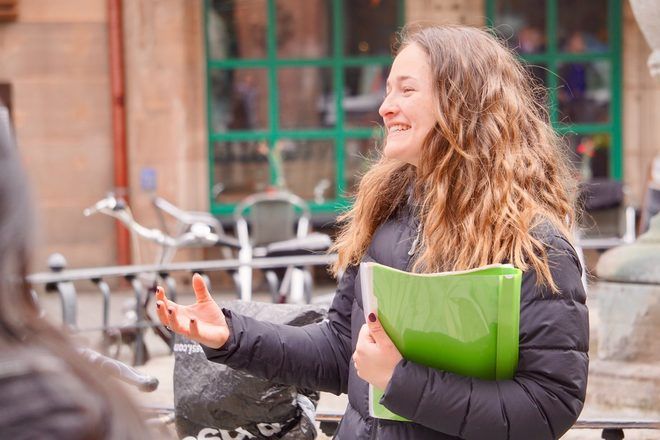
Your tour introduction has several goals:
- Captivate your travelers: you have to show travelers how special this experience will be with you and that it was worth booking. Make it clear that you will exceed the expectations they have.
- Break the ice: travelers don’t know you yet, they don’t know your city, or the other travelers in the group. It’s important to reduce this tension from the beginning.
- Give confidence: You must show your professionalism and credibility so that travelers can trust what you explain.
This introduction is usually short (5 minutes) and is normally structured like this:
- Say hello, welcome them, thank them for booking with you, introduce the tour and get the travelers’ interest.
- Introduce yourself to the group (and sometimes the travelers among them): here you have to show your credibility (experience, studies, time spent in the city …) so that the travelers know that they made the best decision booking your experience.
- Tour structure (key sights) and practical information (duration, if there will be a break to go to the bathroom, the payment concept, …). You make sure travelers know what to expect from you and to show them your professionalism.
- Get travelers’ interest and give time for some practical questions.
Then, in the same place, gurus usually start with their first explanations (most of the time, it’s an historical introduction of the city and the country). This explanation is normally a bit longer than the others (10-15 minutes) and serves to put the context for the rest of the tour. It’s also important to start at the meeting point so late travelers can still join.
2. Balance the types of content
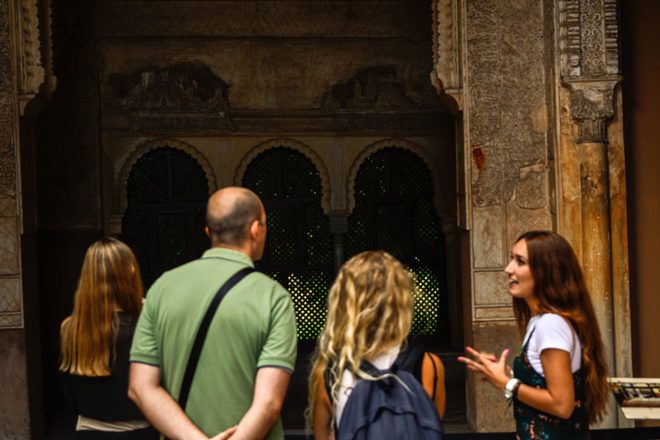
It’s important to find a balance between the different kinds of content to include in your tour so it’s easy for them to follow you.
These are the different types of content that your tour must include:
- History: it’s usually the main focus for the content of your tour and helps to introduce the rest of your explanations. In many cases, travelers have already read part of the story before joining the tour in their travel guide or online but it’s important to explain it as travelers expect it and to put everything in context. It can be both the history of a building or monument, as well as the history related to a topic (specific period, important social movement, gastronomy, …).
- Anecdotes and curious legends: that’s what makes the difference for travelers and what they will remember, since it’s usually something that surprises them and that they don’t usually know about. It touches travelers’ emotions and keeps their attention. This kind of content is usually explained after the historical context.
- Customs and recommendations: Travelers who participate in a free walking tour don’t just want to listen to stories. They also want to be able to understand the city as a local, live as a local and go to places that are not as touristy. That’s why it’s important to include some local customs and personal recommendations in your tour.
You can balance the content both from one spot to another and within the same explanation of the place! (Ex: have a moment to talk just about recommendations or include recommendations after an historical overview).
3. Find the content and write the tour script
Now that you know the type of content you need, it’s time to search for it.
There is no miracle, you will have to read a lot, watch many documentaries, visit many places, talk to the tourist office, experts … and that takes a while.
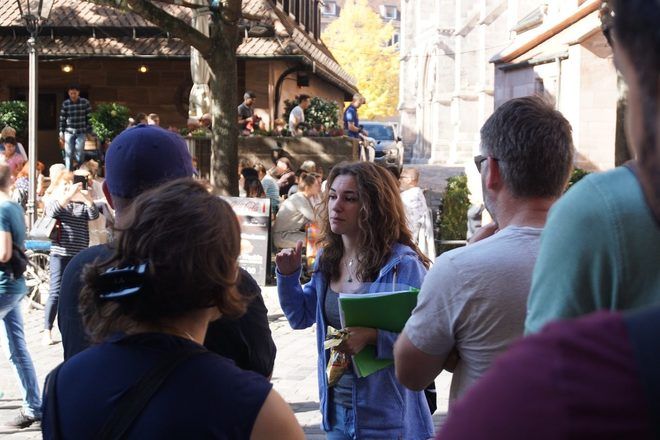
While doing this research, also consider the following things:
- Keep only the most essential and relevant information: you can talk for hours about some places, so it’s important to select only the most interesting part for the traveler.
- Open your search beyond the content of the tour: If you read more than the content of your tour, you’ll be able to show to travelers that you are a true professional by answering all their doubts, which often go beyond what you explain on the tour.
- Verify the data: you can’t trust just one single source of information. Cross-check the data to ensure your script’s content is reliable.
- Write in an understandable way for everyone: sometimes travelers don’t know anything about the topics you are dealing with on your tour, so you have to explain it in a simple and clear way and avoid technical words.
- Think of practical information: free walking tours give travelers a general overview of what the city can offer, so they can then visit some places on their own. That’s why it’s important to know the practical information of the most important places in your city and to include them in your tour: opening hours, ticket prices, how to get there, …
4. Think of the best way to explain your stop
Just as you did by selecting the type of content for your tour, you must also balance the different ways of transmitting this content, which will create a much more enjoyable experience.
Maybe you can explain a personal story, or perform a historical event with travelers, even teach them how to prepare a traditional recipe, or make a quiz … You can find more information on this topic by consulting this post on how to create a more interactive tour and in this post on how to create amazing explanations.
In addition, you can include your travelers better by asking them questions, as we explain in more detail here.
5. Create natural transitions in your itinerary

Maintaining the logic between your explanations can be achieved when you have good transitions, because it gives a common thread to the whole tour. Your experience is not just going from one place to another, you have to see it as a set where each explanation tells a story that supports the overall idea of your experience, like a movie with different scenes.
Good transitions allow travelers to better remember key facts and will help make the journey more meaningful. It also helps you memorize your speech better and will keep travelers interested to follow the whole tour.
You have to add these transitions at the end of the stop or when starting the next one. It can also serve to get travelers’ attention and surprise them, as we explain in this post.
6. End the tour with style

The final part of the tour has to be the cherry on top. Like a good movie, the final part is essential and will be the last impression travelers get before paying you. It’s important to make an emotional ending, so travelers realize how awesome this experience has been with you.
Many gurus achieve this by choosing a very special place to end their tour, such as a vantage point with a spectacular view of the city. Others choose a site that is relevant to the common thread of their tour, because of the history of that place.
What is usually said at the end:
- Summarize the most important elements of the tour, show travelers that the experience was amazing and that they have learned a lot with you.
- Give options on things to do after the tour.
- Remember that they will receive an automatic email from GuruWalk to leave a review on your profile and explain why it’s so important they do so (it allows you to get more bookings).
- Thank them and wish them a good stay.
If they give you an applause, it means that the tour and its ending have been a success.
7. Control time, practice and improve the tour script

Remember, the best free walking tours last between 2 and 3 hours. Shorter than that, travelers will feel that the experience was not complete and longer, you will tire them out too much and they will end up bored.
With Google Maps, you can approximate the time you will need to walk. In this example of an itinerary in Brussels, which is a 2-hour tour, you walk about 40 minutes, leaving 1h20 to tell stories. Only the main stops are represented there, but there are about 10 stops, which makes 10 minutes per stop, taking into account that the first stop is usually longer, so it’s fine.
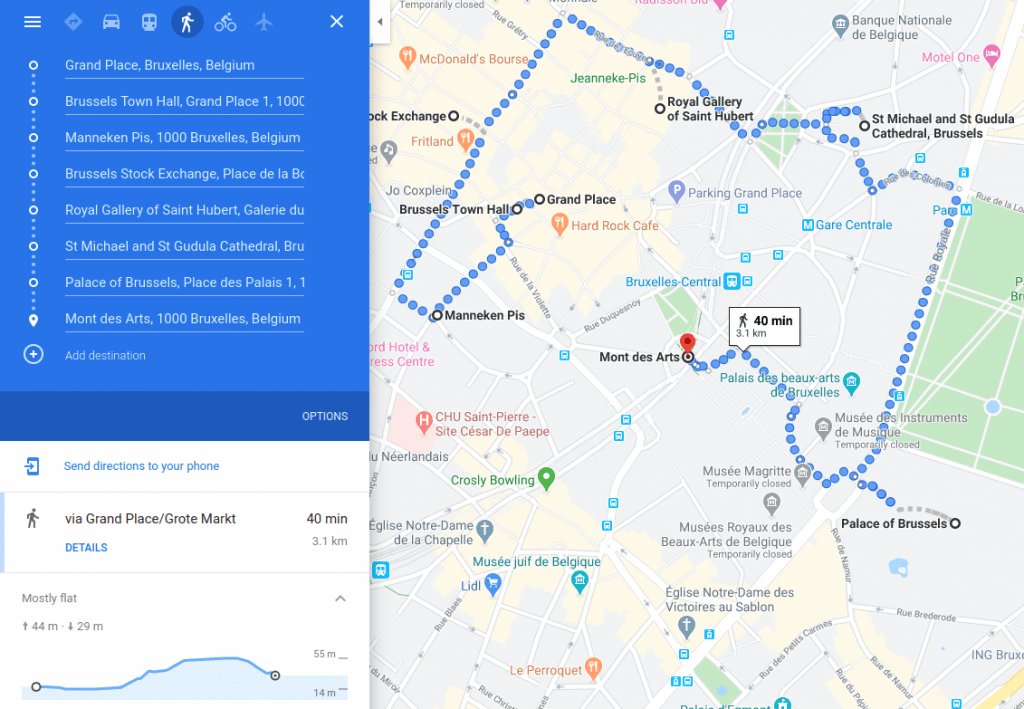
So, you can put a timer so that each stop on your script is no more than 10 minutes. It is not an absolute rule. There are places that require more time and others less.
Now that you’ve added or removed content from the tour script, it’s time to practice it at home and learn it well.
Once you have it ready, practice it with a friend or family member in real conditions. This person can also give you valuable feedback to improve your speech. Look at the time before starting the tour and halfway through the tour, verify your progress at the halfway point to make sure you are on target. If not, you will have to add or remove content.
You have to constantly review your tour script. With practice, you will realize what is more or less interesting to travelers.
However, keep in mind that the speed of the group is always different. So you have to identify less important explanations or places that you could skip or add to meet the duration of the tour.
It’s important to memorize the tour script perfectly. In front of the group of travelers, you can’t doubt or read something from a notebook. Otherwise, you may lose all your credibility (and money… ).
What’s next?
Do you have your tour script ready and are you learning it? Before doing your first tours with travelers, check out this post about the most common mistakes when starting as a tour guide and how to avoid them.
Leave a Reply